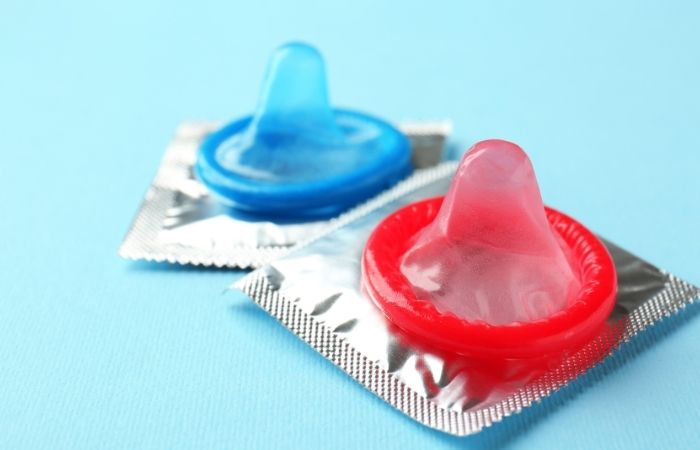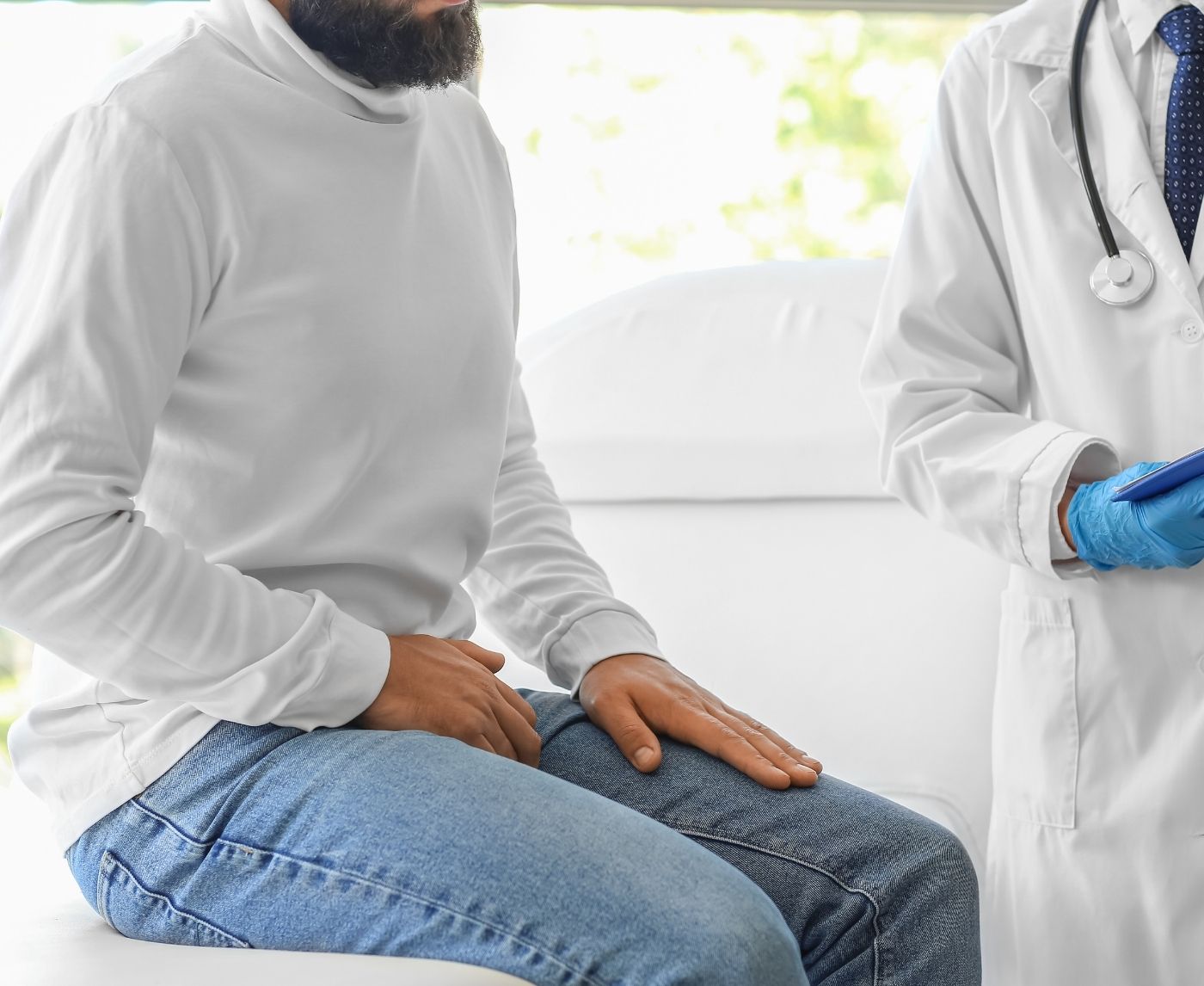Quick Answer: Condoms reduce, but don’t eliminate, your risk of getting an STD. Infections like HPV, herpes, and syphilis can spread through skin-to-skin contact in areas not covered by a condom.
The Condom Confidence Trap
Let’s be clear: condoms are one of the most powerful tools we have for STD prevention. When used consistently and correctly, they dramatically reduce the spread of infections like HIV, gonorrhea, and chlamydia. But here’s the part that gets glossed over: condoms don’t cover everything. Literally.
Most people think of STDs as something you catch from semen or vaginal fluid, and yes, that’s one route. But STDs like herpes and HPV live in the skin. They spread through direct contact, genital, anal, or even oral. That means if someone has an outbreak on the base of the penis, the inner thigh, the labia, or anywhere the condom doesn’t reach, transmission is still possible.
This is why people who swear they always use protection still end up with herpes. Or HPV. Or an unexpected positive test weeks after a “safe” hookup. It’s not about doing something wrong, it’s about not realizing the rules were rigged from the start.
In a 2022 review published in Sexually Transmitted Diseases Journal, researchers found that condom use reduced the risk of genital herpes by about 30–50%, depending on frequency and consistency of use. That’s helpful, but it’s far from full protection.
And HPV? That virus is even trickier. It’s so widespread, so stealthy, and so adaptable that even people who’ve had one lifetime partner can test positive. It’s no wonder that “But I used a condom!” is one of the most common phrases heard in STD clinics across the world.

People are also reading: Can Herpes Cause Cancer? What You Actually Need to Worry About
What Condoms Block, and What They Don’t
Think of condoms like a rain jacket. They keep you dry, until the storm finds another way in. With STDs, that “other way” is uncovered skin, microscopic tears, or simply areas of friction that extend beyond where latex ends. Some infections travel in fluids. Others just need contact.
Let’s break it down. Here's what condoms do (and don’t) protect you from, based on how each STD is transmitted:
| STD | Transmission Route | Condom Protection |
|---|---|---|
| HIV | Blood, semen, vaginal fluids | Very high (~98% with consistent use) |
| Chlamydia | Semen, vaginal fluids | High (~90–95%) |
| Gonorrhea | Semen, vaginal fluids | High (~85–95%) |
| Syphilis | Skin-to-skin (sores/ulcers) | Moderate (~50–70%) |
| HPV | Skin-to-skin (genital area) | Low to moderate (~30–60%) |
| Herpes (HSV-2) | Skin-to-skin (genitals, anus, mouth) | Moderate (~50%) |
| Trichomoniasis | Semen, vaginal fluids | High (~90%) |
Figure 1. Condom effectiveness by STD. Protection drops sharply for infections that spread through skin contact beyond covered areas.
Order Now $129.00 $343.00 Check Your STD Status in Minutes
Test at Home with Remedium
7-in-1 STD Test Kit




For all 7 tests
“We Used a Condom. I Still Got Herpes.”
Sierra, 26, had been dating someone new for three months. They waited to have sex. They used condoms. They did “everything right.” So when she noticed a painful sore near her vulva, herpes wasn’t even on her radar.
“I thought maybe it was a cut or irritation from shaving,” she said. “But it burned when I peed, and then more bumps showed up. My OB said it looked like herpes right away.”
Sierra was stunned. She never saw visible sores on her partner, and assumed the condom had protected her. But like many people, she hadn’t realized herpes can live and shed on skin far beyond what a condom covers.
“I felt betrayed, by him, by the sex-ed I got, by my own body. It was like, why even bother being careful?”
Stories like Sierra’s aren’t rare. They’re the norm. What’s missing is the public health honesty to say: condoms help, but they aren’t magic. And they don’t cancel out the need for testing, especially after new partners, anonymous hookups, or skin-to-skin contact during oral, genital, or anal sex.
If you’re in that “should I test?” limbo, the answer is probably yes. You don’t need a full-blown symptom to justify checking in with your body.
The truth is, STD symptoms don’t follow rules. Some show up in days. Others lie low for weeks. And plenty never show up at all.
This guide on STD testing timelines can help you figure out when it’s actually worth testing, versus when you might get a false negative by going too soon.

People are also reading: Eye Infection After a Hookup? It Might Not Be Just Pink Eye
Still Feel Off? Don’t Guess, Check Your Risk
If you’re reading this, you already care. You already double-checked the condom. You already googled the symptoms. But you still have that nagging voice asking: “Am I okay?” And here’s the hard truth, there’s no universal answer to that.
Some infections take 3 days to show up. Others take 3 months. Some spread without symptoms. Others flare up like a fire alarm. What matters isn’t just what you did, it’s when, how, and who with. That’s why we built the STD Risk Checker Quiz.
This anonymous tool breaks down your exposure type, protection level, timing, and testing windows, all without any judgment. It’s the fastest way to go from “What if?” to “Here’s what to do.” Whether you’re worried about herpes from oral sex or wondering if a rash means anything, the quiz gives you a real starting point.
Because You Deserve More Than Guesswork
There’s a reason we offer rapid, at-home STD test kits. Because shame shouldn’t be a barrier to answers. Because no one should have to sit in a waiting room wondering if they’re being judged. And because even the best condoms can't rewrite biology.
If you’ve had new partners recently, even with protection, a Combo STD Home Test Kit is a smart move. It covers the most common infections, delivers results quickly, and keeps your information 100% confidential.
Don’t let silence become your strategy. Test from home, stay in control, and get answers that match your reality, not someone else’s assumptions.
Even when you played it safe, clarity is still your best protection.
Check Your STD Status in Minutes
Test at Home with Remedium10-in-1 STD Test Kit

 For Women
For Women Results in Minutes
Results in Minutes No Lab Needed
No Lab Needed Private & Discreet
Private & DiscreetOrder Now $189.00 $490.00
For all 10 tests
FAQs
1. So wait... condoms don’t protect me from everything?
Not everything, no. They’re amazing at blocking infections that spread through fluids, think HIV, gonorrhea, chlamydia. But STDs like herpes, HPV, and syphilis? Those are skin-to-skin ninjas. They can sneak in through areas the condom doesn’t cover. Doesn’t mean condoms are pointless, just not perfect.
2. I used a condom every time. How did I still get herpes?
First: you're not dirty, and you didn’t fail. Herpes can live on the groin, thighs, even buttocks, areas condoms don’t cover. If your partner was shedding the virus (even without symptoms), it could’ve passed during any kind of intimate contact. You were cautious. The virus was sneakier.
3. Which STDs are the hardest to prevent, even with protection?
HPV tops the list, followed by herpes and syphilis. All three love skin-to-skin contact. They don’t need semen or vaginal fluids to move house. That said, using protection still lowers your odds, and regular testing catches what slips through.
4. Can I get an STD from oral sex, even with a condom?
Yep. Condoms reduce risk, but they’re not a total block, especially if you’re going down on someone and the condom doesn’t cover everything. Plus, few people use protection for oral, which opens the door to gonorrhea, chlamydia, syphilis, and HSV-1 (oral herpes).
5. Should I still get tested even if I used protection and feel fine?
100% yes. A huge chunk of STDs don’t show symptoms, especially HPV, chlamydia, and hepatitis B. You could feel amazing and still be carrying something you didn’t ask for. Testing is a wellness move, not a punishment.
6. How long should I wait before testing after protected sex?
Depends on the infection. Chlamydia and gonorrhea can be detectable in as little as 5–7 days. HIV takes 2–4 weeks with modern tests. Syphilis needs about 3 weeks to show up. Not sure? This guide breaks it all down.
7. Is HPV really that common?
Wildly. Around 80% of people will have it at some point in their lives, and most never know. That’s why there’s a vaccine, and why testing (when available) is so critical. Condoms only reduce the risk a bit, so vaccination and screening are your power plays.
8. Can I test at home even if I used protection?
Absolutely. At-home STD tests don’t care if you wore a condom, they care about exposure. If there was contact, testing makes sense. They're private, fast, and designed for people who want peace of mind without the waiting room.
9. Is “safe sex” even a real thing then?
Honestly? We prefer “safer sex.” Nothing’s 100% except abstinence, and that’s not the world most of us live in. Safer sex is about layers, condoms, testing, communication, vaccines, and knowing your body. It’s not about perfection. It’s about protection with a plan.
10. Do people actually talk to their partners about this stuff?
The brave ones do. And every time someone asks, “Hey, when’s the last time you tested?” it makes space for others to do the same. It’s awkward… until it’s not. Normalize it, and you normalize respect. Your body, and your future self, will thank you.
You Did Your Best. Now Take the Next Step.
You used protection. That matters. But it’s not the end of the story. Whether you’re feeling symptoms, sitting with worry, or just doing your due diligence, testing is the next act of care. Not because you were reckless. Because you’re responsible.
It’s time we stopped calling it “safe sex” and started calling it what it really is: safer sex. Because you can do everything right and still end up with questions. That doesn’t make you dirty. It makes you human.
Get the clarity you deserve. Try a discreet, at-home STD test kit today, because your body’s worth knowing.
How We Sourced This Article: We combined current guidance from leading medical organizations with peer-reviewed research and lived-experience reporting to make this guide practical, compassionate, and accurate. In total, around fifteen references informed the writing; below, we’ve highlighted some of the most relevant and reader-friendly sources.
Sources
1. Planned Parenthood – Safer Sex and STD Prevention
2. WHO – Sexually Transmitted Infections
3. Syphilis Treatment Guidelines and Window Periods | CDC
4. HIV Test Window Periods & Reliability | HIV.gov
5. Common Misconceptions Associated With STDs/STIs — Urology Times
About the Author
Dr. F. David, MD is a board-certified infectious disease specialist focused on STI prevention, diagnosis, and treatment. He blends clinical precision with a no-nonsense, sex-positive approach and is committed to expanding access for readers in both urban and off-grid settings.
Reviewed by: C. Medina, MPH | Last medically reviewed: November 2025
This article is for informational purposes and does not replace medical advice.










